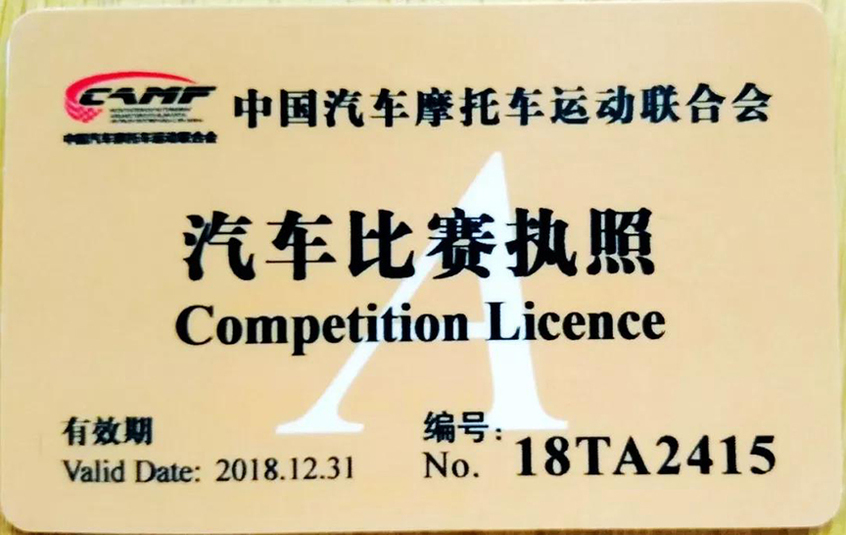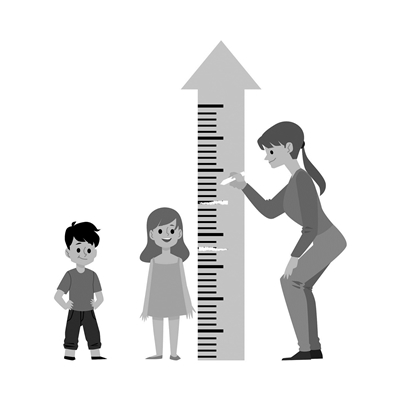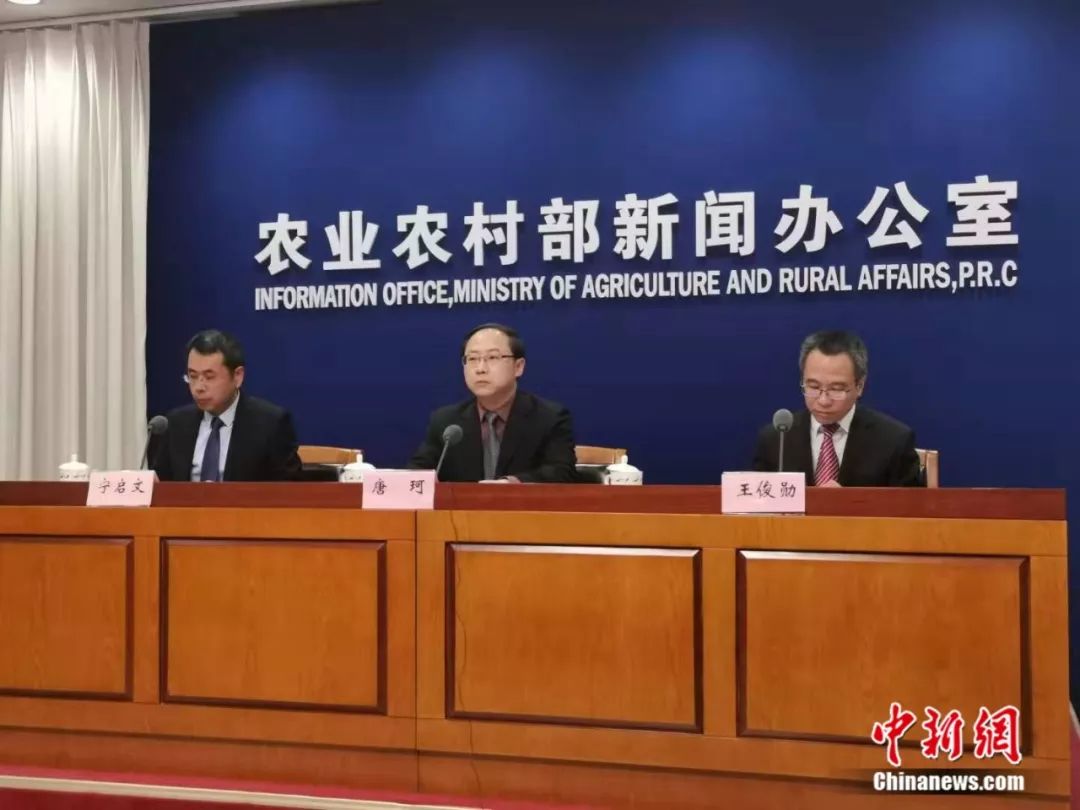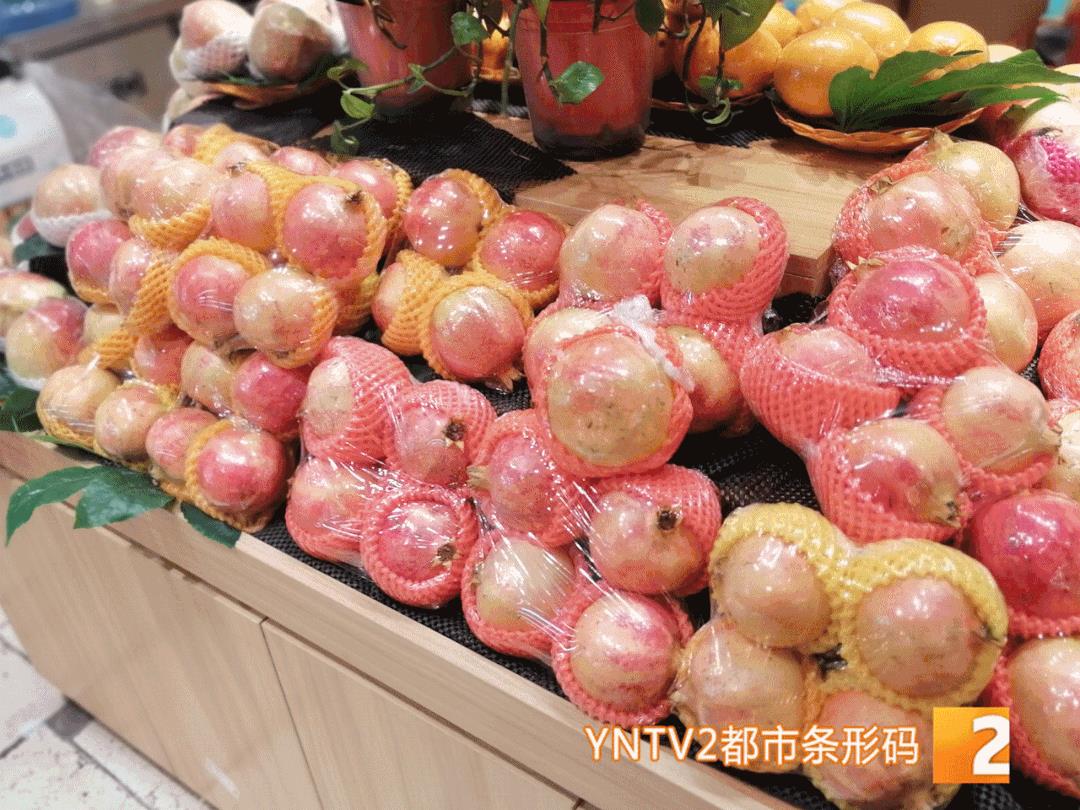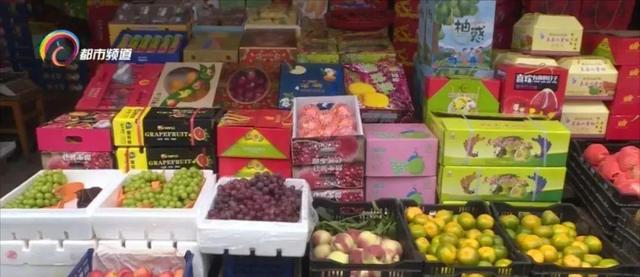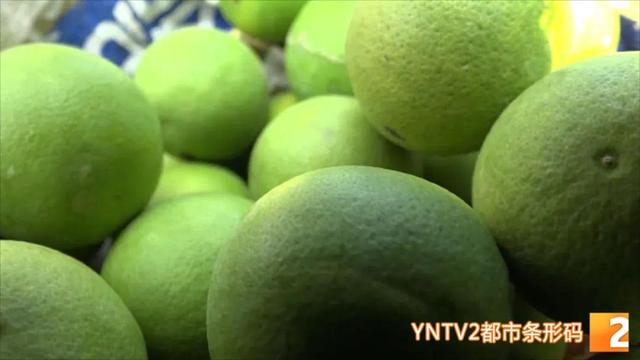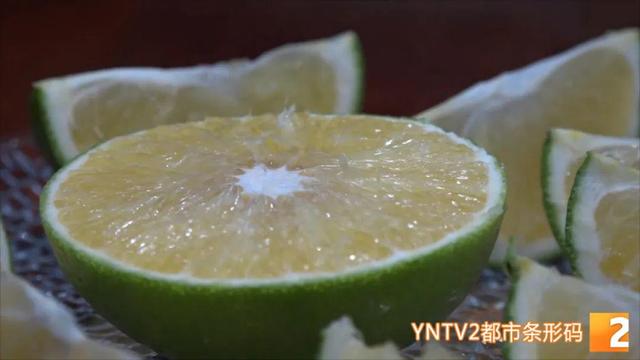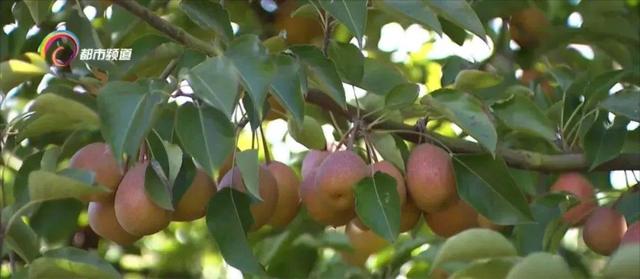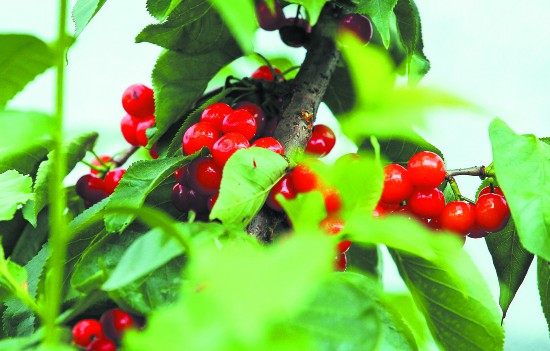
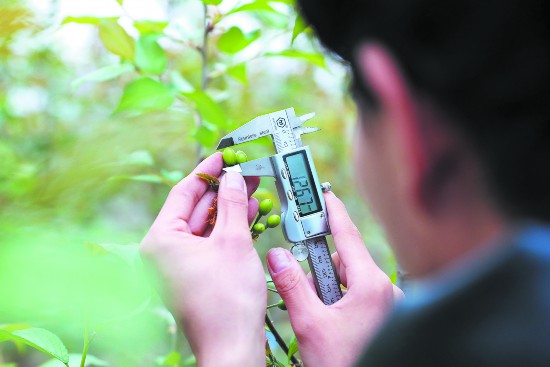
The time has just entered the end of March, and some cherries in the cherry breeding nursery of the modern agricultural research and development base of Sichuan Agricultural University have turned from green to red, and the color is as crystal clear as ruby, which is much larger than the cherries we remember. At this time, there are no traces of cherries in the market. How can such a big, sweet and early-maturing cherry be cultivated?
"This is our early-maturing strain, which was bred by crossing local cherry germplasm with early-maturing characteristics, and matured more than 10 days earlier than the cherries on the market." Wang Xiaorong, a professor at the College of Horticulture of Sichuan Agricultural University, said.
China cherry originated in China and has been cultivated for more than 3,000 years, but it is small in size, thin in peel, not resistant to storage and transportation, and short in picking time.
In order to make cherries bigger and sweeter, the fruit germplasm innovation and genetic improvement team of Sichuan Agricultural University began to collect, research and cross-breed cherry germplasm resources in China more than 10 years ago. The team traveled to 106 townships in 70 counties (cities) in 12 provinces and cities in China, collected nearly 1,000 cherry cultivated germplasm and wild resources in China, and established a field resource gene bank representing the genetic diversity of cherries. According to the development and consumption demand of cherry industry, hybrid breeding was carried out with early maturity, big fruit, sweet taste, rich flavor and storage and transportation resistance as the main breeding objectives. Professor Wang Xiaorong, who is in charge of cherry research and breeding in China, told the reporter that at present, the team has bred more than 70 excellent hybrid strains, of which 10 strains with the most potential have been tested and demonstrated in Tianfu New District, Xinjin, Hanyuan, Miyi, Xichang and Nanchong.
Searching for seeds
Travel to 106 townships in 12 provinces and cities.
Collect and evaluate nearly a thousand cherry resources.
To do cherry breeding, we need to have rich cherry germplasm resources. Where do the cherry germplasm resources in China come from?
A few days ago, the reporter walked into the cherry resource nursery in China, where the team has worked hard for more than 10 years. I saw different numbers hanging on each cherry tree in the facility shed: BJ, LY, PD, ZZ…… … These numbers respectively represent the geographical sources of cherry germplasm: Bijie, Guizhou, Linyi, Shandong, Puding, Yunnan, Zhengzhou, Henan … For more than 10 years, the team members have paid attention to 70 counties (cities) in 12 provinces and cities focusing on southwest China.
"At first we were short of funds, and the process of resource investigation and collection was very difficult." Wang Xiaorong recalled that it was common to take a hard seat on the train for dozens of hours to go to the destination. It was even more important to go deep into the wild and wade through the mountains. When the luck was bad, hail and mudslides were encountered, and sometimes I had to spend the night in the wild.
At the beginning of field investigation, express delivery was inconvenient. Specimens, fruits and seeds collected by teachers and students, plus desiccant, a backpack weighs more than 40 kilograms, and everyone has to carry it all the time until it is carried back to school. Later, in 2013, the express delivery industry developed, and the specimens and samples collected by teachers and students could be sent back first, which made everyone relaxed a lot.
Through the identification and collation of nearly 1000 resources, the team screened out the core germplasm of cherry and established a field resource garden representing the genetic diversity of cherry in China, which laid a solid foundation for the selection of excellent parents for cherry cross breeding.
breed
Busy as a war when pollinating.
Observe in the field every day and wait for the right time.
During this period, cherries began to be colored, and team members went to the base every day to observe and record the growth, development and morphological characteristics of each cherry.
"Look, this is the excellent single plant we have cultivated. The fruit can generally reach 4-6 grams, and the sweetness is above 15%, while the average China cherry on the market is only 2-3 grams." Wang Xiaorong said, "It’s not a bad time. We just need to observe and record in the field every day to strengthen the management of water and fertilizer. The busiest time is when pollinating cherry flowers. At that time, it was as busy as a war. "
Generally speaking, before and after the Lunar New Year, cherry blossoms can’t wait to open. "China cherries are self-compatible, and each flower has both pistils and stamens. If we want to hybridize, we have to race against time to help them castrate and pollinate before they finish pollination and fertilization. Every year, we are left with less than a week. " Wang Xiaorong explained.
Every time the cherry blossoms are in bloom, the team members will stay in the nursery every day. "At that time, the strings in my mind collapsed at any time, and I saw the buds on the trees. We observed them in the field every day and waited for the right pollination time. Seeing that the sun has been shining for several days, the buds are growing day by day, and everyone will act as soon as the time comes! "
Everyone cut off the flower branches used as male parents and brought them back to the laboratory. At room temperature of 25 degrees Celsius, after the bell flowers opened slightly, the pollen on the stamens was collected, put into small glass bottles and stored in a refrigerator at 4 degrees Celsius.
Two days later, the massive pollination work officially began. At dawn, team members came to the base to start pollination. Every pollination needs to go through such a process: first, remove all the stamens of a flower, leaving only the stigma, then use a brush or cotton swab to paint the flowers collected in advance in the glass bottle on the stigma, and then put on a bag to prevent it from being affected by external pollen.
How many flowers are there in a cherry tree? Hundreds, even thousands. This means that the same action will be repeated hundreds or thousands of times just to pollinate a tree. Dozens of people participate in cross pollination every year, but this is only the beginning of breeding. If you are lucky, you can receive the hybrid seeds, and then carry out "embryo rescue" in the laboratory, and cultivate the seedlings in the light incubator. After the seedlings undergo hardening and strengthening, they can be transplanted to the field breeding nursery. After 3-4 years of careful care and cultivation, cherry hybrid seedlings began to blossom and set fruit, and then excellent individual plants could be screened according to breeding objectives and field observation data.
Since the start of cherry cross breeding in 2011, the team has experienced several failures: hybrid seeds "embryo abortion" and hybrid seedlings died … but they still persisted in the end and finally succeeded in crossing, and obtained several cross combinations and nearly 3,000 hybrid populations. Nowadays, the hybrid population has entered the stage of stable flowering and fruiting.
superiority
Breeding early-maturing and late-maturing strains
The time for viewing flowers and fruits can be extended by 15 days each.
Cherry has the reputation of "the first branch of spring fruit", which blooms the earliest, has beautiful fragrance and crystal clear fruit, and can be enjoyed by both flowers and fruits. It is a characteristic fruit tree that is very suitable for developing "one-three integration" and rural tourism.
Some excellent hybrid lines selected by the cherry breeding team of Sichuan Agricultural University have been tested and demonstrated in Tianfu New District, Xinjin, Miyi, Hanyuan, Xichang and Nanchong. The team has bred 3,000 excellent strains this year, and plans to breed 12,000 strains next year to prepare for large-scale experiments and demonstrations.
"China cherry blossoms early, but thanks quickly, and the fruit has not been on the market for more than a month. Through our cross breeding, early-maturing and late-maturing strains were selected. If a grower plants early-maturing and late-maturing strains at the same time, then on the whole, the time for enjoying flowers and tasting fruits can be extended by more than 15 days respectively. " Wang Xiaorong said, "This will bring greater commercial value to the cherry industry."
In Xiaoyan Village, Taiping Street, Tianfu New District, a "Dr. Cherry Workstation" jointly built by Tianfu New District and Sichuan Agricultural University has been established. At present, this demonstration site is installing water and fertilizer integration facilities, which will serve as a display window for new cherry varieties, new technologies and new models, and help the development of cherry industry and the cultivation of innovative and entrepreneurial talents in Tianfu New District.
Supported by the National Natural Science Foundation of China and the special program of Sichuan Youth Science and Technology Innovation Research Team, the research and breeding team of Sichuan Agricultural University Cherry has adopted genomics, molecular biology and molecular genetics to carry out the work of gene mining and utilization of excellent cherry traits, which will further provide theoretical and technical support for the improvement of cherry germplasm and the cultivation of cherry varieties with excellent comprehensive characteristics in China, and promote China’s cherry breeding to enter an efficient breeding fast lane combining molecular-assisted breeding with conventional cross breeding, based on Sichuan facing the whole country and starting from germplasm innovation.
Reporter’s notes
They are "dream catchers" of cherry breeding in China.
For China cherry, due to the late start of domestic breeding research, there are still few excellent commercial varieties. However, Wang Xiaorong said that the characteristics of China cherry, such as wide adaptability, stress resistance, early flowering and early maturity, can’t be replaced by European sweet cherry. By selecting excellent parents to carry out long-term cross breeding and cultivating new varieties of China cherry with excellent comprehensive properties, it can not only improve the attractiveness of China cherry to consumers, but more importantly, it can greatly improve the benefits of growers and contribute to rural revitalization and farmers’ getting rich and increasing income. From collection, seed selection to breeding, more than 10 years of hard work will soon bear fruit. As the "dream catcher" of cherry breeding in China, Wang Xiaorong and her team will realize their dreams one day. (Chengdu Daily reporter Li Juan Photography Hu Datian)
|




